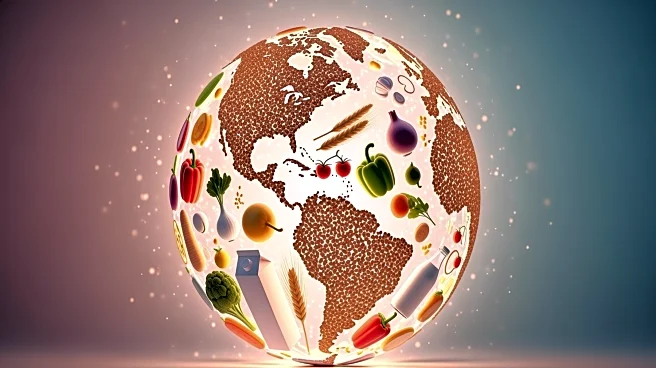What's Happening?
Lumina Intelligence, in collaboration with FoodNavigator, has released a report indicating a growing consumer demand for transparency in food labeling. The report reveals that over 60% of consumers globally
are scrutinizing ingredients lists on food packaging, driven by health, sustainability, and ethical concerns. Despite this interest, many consumers struggle to understand the complex information provided. The trend is particularly strong in Asian countries like China, India, and Malaysia, where cultural links between food and health, as well as past food safety incidents, have heightened consumer vigilance. Brands are encouraged to adopt transparent and accessible communication strategies to meet these consumer needs.
Why It's Important?
The increasing demand for transparency in food labeling reflects a significant shift in consumer behavior, impacting food manufacturers and retailers. As consumers become more informed and concerned about health and sustainability, brands that fail to provide clear and comprehensible information may lose market share. This trend could lead to changes in industry practices, with a focus on simplifying ingredient lists and enhancing transparency. Companies that successfully adapt to these demands may gain a competitive edge, while those that do not may face consumer backlash and decreased sales.
What's Next?
Food brands are likely to intensify efforts to improve transparency and communication with consumers. This may involve revising packaging to make ingredient lists more understandable and engaging in experiential marketing strategies to educate consumers about product benefits. Additionally, there may be increased collaboration with health and sustainability experts to align product offerings with consumer expectations. As awareness of ultra-processed foods grows, brands might also explore reformulating products to reduce additives and non-food ingredients.
Beyond the Headlines
The demand for transparency in food labeling could have broader implications for public health and environmental sustainability. As consumers become more aware of the impact of food production on health and the environment, there may be increased pressure on the industry to adopt more sustainable practices. This could lead to innovations in food technology and production methods, as well as shifts in consumer preferences towards more natural and ethically produced foods.












